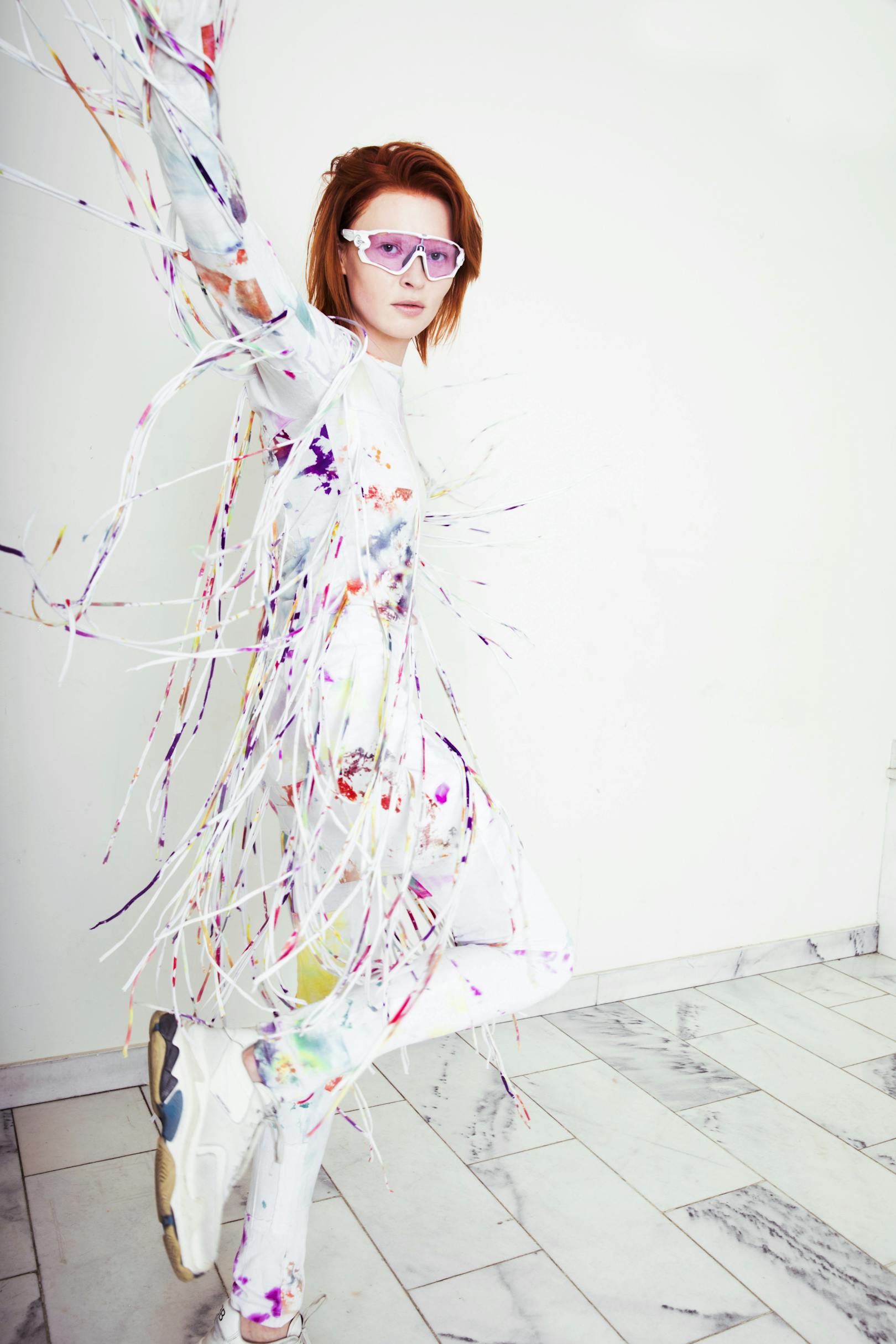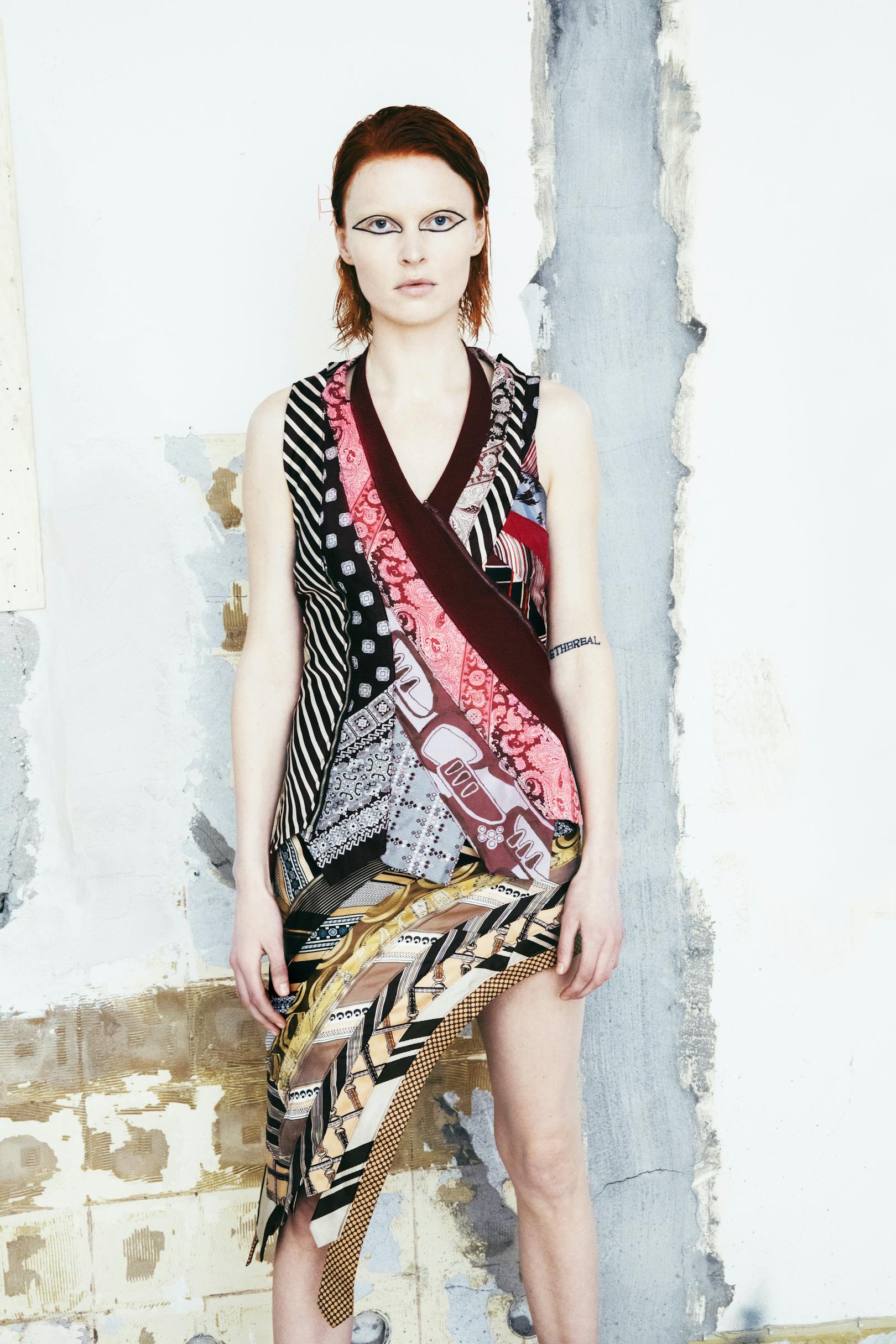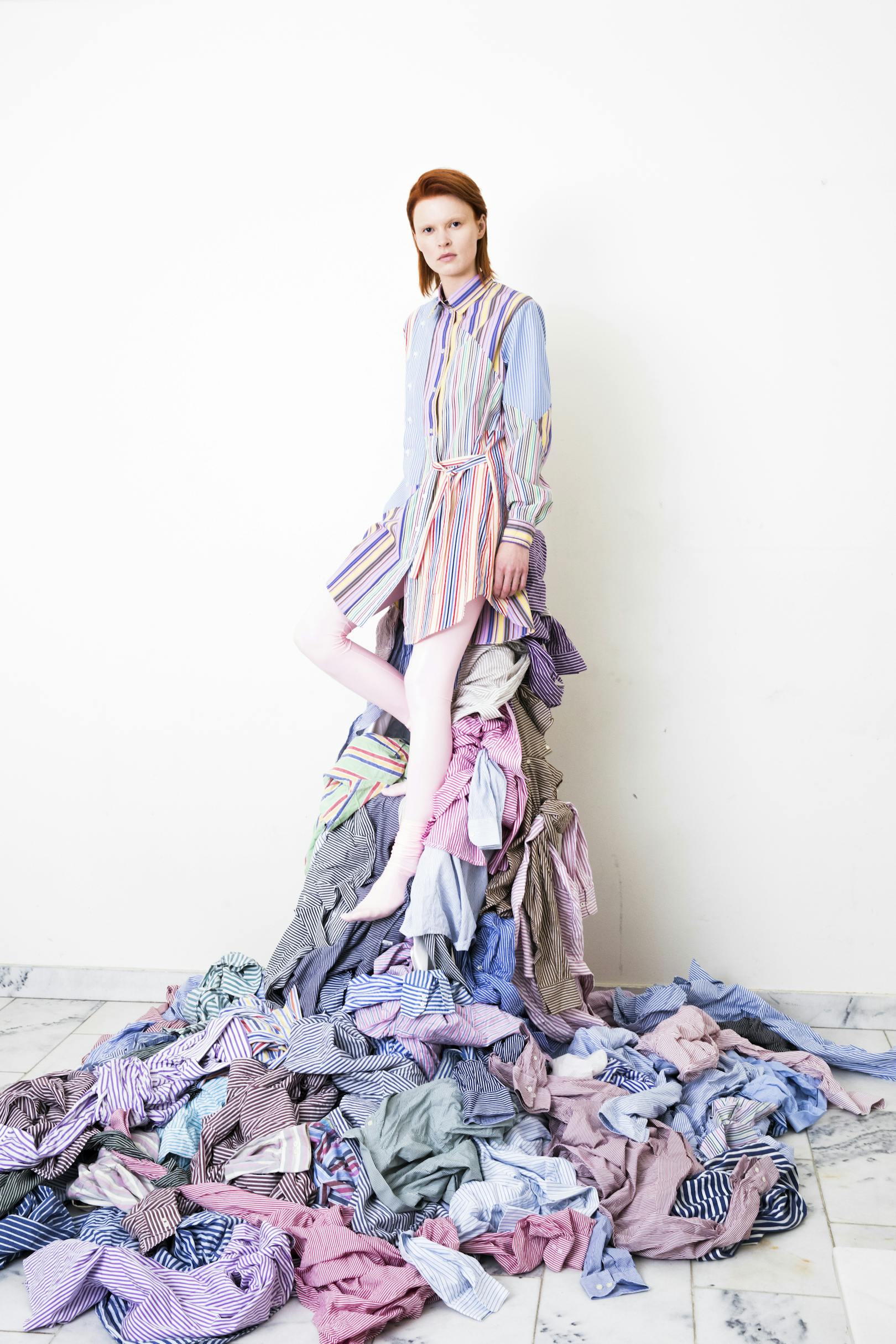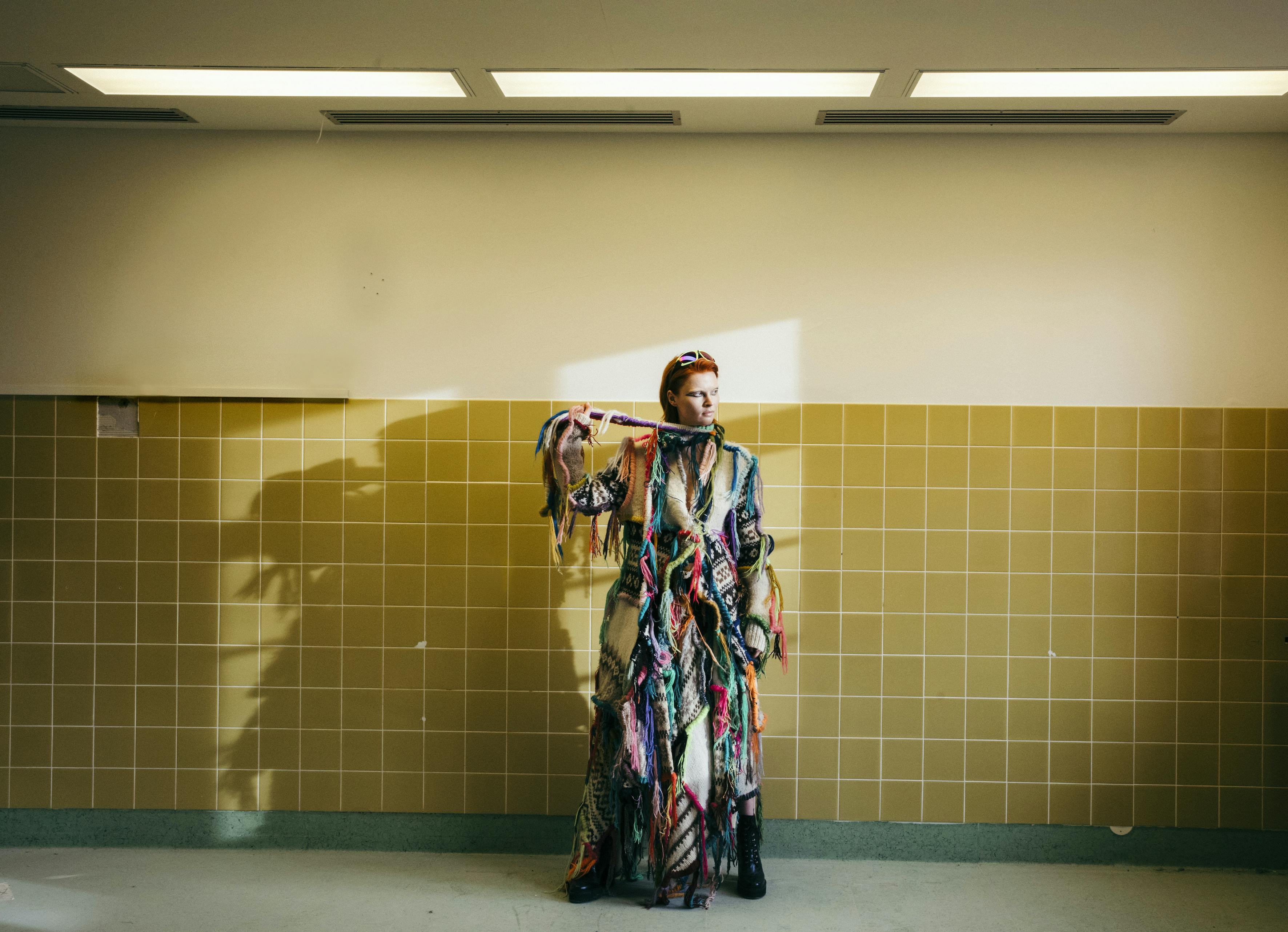“Recycle or Die” - Bára in Aftur

In 2019, Bára Hólmgeirsdóttir, the owner and designer of the label Aftur, was nominated for the Nordic Council Environment Prize, where the theme is sustainable consumerism and production. This was a well-earned nomination for Aftur, which celebrated its 20th anniversary the same year, having focused from the start on recycling clothes by creating new items out of old garments.
“When I sat on the board of the Association of Icelandic Fashion Designers, I pushed for the association to resolve to move in a sustainable direction. That this could be the uniqueness of Icelandic fashion designers. At the time, this suggestion largely fell on deaf ears, and I understand that very well. Designing clothes is a hard business when you live on a tiny island where designers are busy just trying to make a living.”
Sustainability, and reusing clothes to protect the environment, was not a well-known ideology when Bára, along with her sister Hrafnhildur Hólmgeirsdóttir, founded Aftur in 1999. So what inspired them to focus their design work around this?
“The reason was simply that we wanted to be fashion designers and design something new and original, but we couldn’t justify it to ourselves to add to the tons of clothing that already existed. At the time we worked in purchasing for the second-hand clothes shop Spúútnik and we could see with our own eyes all the textiles that nobody wanted. It just felt logical to use them.”



But does Bára sense the awakening that is now happening in society?
“We might say I’ve been waiting for this awakening for years. If we want to decrease textile waste, we as consumers must examine our own habits. We need to buy less. The client is the sleeping giant, the catalyst for change. At the same time, we all need to own clothes. It is a necessity, as well as an act of expression, and always has been. But we don’t have to own so much.”
How can a company that sells clothes prosper by telling people to buy less?
“We can all do something, every little thing matters. Sometimes, when I’m in the middle of sorting through old garments and trying to find a way to make something new out of them, feeling the strain of recycling and running a business – while trying to pay a decent wage – then I feel empowered to think that I am setting a good example, and showing that it can be done. It keeps me going. I just need to accept I’ll get less profit and rather focus on what I can do to improve my closest environment. Not just how much money I can make, but how I can improve the quality of life. We need to ask ourselves, am I being greedy? How much do I need? We know that we don’t need all of this, and we know that we can’t continue in this way. We can’t continue treating the earth, treating people, as we have been. We need to turn off the tap of production and the government has to get involved. Until that happens, nobody will do anything, because of the demand for eternal economic growth. But this also needs to be reconsidered; growth should be connected to other things besides consumerism, such as happiness, health and education.
I have abandoned the traditional fashion “seasons” and I only work with labels who can adhere to this. That way, less goes on sale and clothes can be sold year-round, irrespective of fashion trends. In my opinion, this is where the future of fashion design lies. You should dress to make yourself feel good and in accordance with the message that you wish to send. Don’t let people whose work is to sell as much as they can tell you what to wear.”

How can designers do their bit to turn this development around?
“You can design and develop all sorts of things, create new methods and new textiles, but we need a change of mindset and attitude in all fields. People need better information in order to understand the consequences of the excessive consumption that goes on. I want to ban waste landfills and make it mandatory for everyone, individuals and companies, to recycle. I think it’s crazy that our politicians aren’t fighting harder for this.
With regard to textiles and fashion design, I think it is key to do a good job, design better and produce only what is needed, no more. Then do something new. It is okay if there is a shortage. No one will have to go naked. Consumers should also keep a few things in mind: Do you know where the fabric comes from, are the working conditions in the factories decent, are people being paid a proper wage? Do I need this? Fashion designers should choose production countries as close to their own as possible – so they can ensure that regulations regarding environmental issues are in place and that employees’ rights aren’t being broken – and try to design using things that already exist. There is an endless overproduction of textiles in the world. The main questions that they need to ask themselves are: “How little profit is enough?” and “Can I bring anything to the table that doesn’t already exist by the bucketload?” If they can answer these questions, they should be able to find a place for themselves in fashion design that does not harm the environment.”